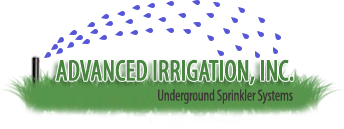Spring is just around the corner, and your lawn sprinklers will soon be back in operation. However, if you began to notice problems last season, then your sprinklers may not work as well as they should be. Luckily, there are some troubleshooting techniques you can do to determine what’s causing the problem(s).
Increased Water Usage
If you notice that your water usage has gone up, then it could be a problem with your sprinklers, whether it’s equipment malfunctions, broken lines or incorrect scheduling. It can be easy to blame your sprinklers when it might be something else, so check for the following:
- See if the watering schedule was correctly set or readjusted. This can be found in your controller.
- Look for excessive dampness or wet spots in your yard.
- Turn on the system, and see if geysers or water is coming out from under heads.
If you find any of the following, then get in touch with us today, so we can perform a more thorough check of your system.
System Won’t Run or Turn Off
Is your system not turning on or off? Check the following:
Problems Turning On
- Check to see that all supply valves are in the “on” position. You’ll find at least one in your basement, and two on the outside backflow device.
- Make sure the clock is on and running. If not, reset it by turning it from auto to off. If the clock doesn’t seem to be doing anything, then check the fuse.
- Check your rain switch if it’s rained recently. Empty it if it’s full.
- If you can hear water running and see that the meter is running, then it could be a cut line somewhere on the system.
Problems Turning Off
- Check the clock.
- See if there’s debris in any of the control valve. Turn on the zone for three seconds, and off for three seconds several times in succession. Even if this seems to solve the problem, you should still have your system serviced.
- Turn the supply off at the backflow device, and leave it off for 30 seconds before turning it back on.
If you find you still have problems, contact us today.
Spraying Troubles
If you have spray head sprinklers and notice they don’t operate like they should, there is most likely debris in the nozzle. If this occurs, the nozzle will have to be replaced with a new one.
If your irrigation system is more than 5 years old, it is not up to date with the new water saving technology. The new innovations in the irrigation industry have resulted in up to a 50% reduction in water usage by using ET based controllers, weather stations, efficient irrigation heads, uniformity, uniform spray nozzles and uniform designs. An average residential irrigation system uses 2,000 gallons of water per cycle, and will operate for 72 cycles in Minnesota.
None of the above? Then call us now at (612) 599-8675 or Click Here to Request a Free Estimate.




